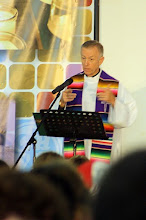“What are cardinals in the Catholic Church?” is a question I
am often asked, especially when the Pope gets ready to name new ones. So here goes a modified answer to the way I
used to reply…
Who becomes a “cardinal”? Historically, they were the bishops, priests and deacons most closely associated with the major churches in Rome [they were, in effect, a combination of local clergy, consultors, and vicars for the Bishop of Rome]. Even today, every cardinal is given charge of a church in Rome [Cardinal Newman’s church was San Giorgio in Velabro; Cardinal Dolan’s is Ss John and Paul, and so on].
More recently, cardinals have been so named if they are bishops of historically important, or very large, or very wealthy/influential dioceses. Examples of the former would include Milan, Madrid, Vienna, or Paris. Examples of the latter, in our country, would be New York, Philadelphia, Boston, or Chicago.
This practice has actually tipped the scales in a papal election [conclave] in an interesting way: Italy of course always has led the percentage of cardinals, but the United States was #2.
Pope Francis is changing all this.
His newest nominations are representatives from the “ends of the earth” literally, and they reflect two very important realities. The first is that the Holy Father is dedicated to making this crucial body of clerics truly international—representing the catholicity of the Catholic Church, especially in areas that are historically poor and suffering [and forgotten]. The second is that his selections are reflecting the new demographics of the Church: its primary existence is in the Southern, not the Northern, Hemisphere.
So now the best description of what it takes to be a cardinal is the place he can offer as a representative of a fully world-wide Church: ALL voices need to be heard.


